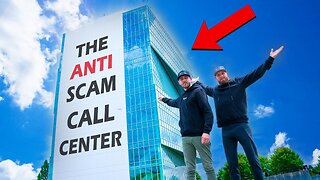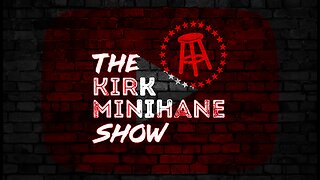Mérida Mexico - Market, Food, Mall, Football, Cantina - Travel Vlog - RICH TV LIVE
Mérida Mexico - Market, Food, Mall, Football, Cantina - Travel Vlog - RICH TV LIVE - #merida #mexico #richtvlive #travel #vlog #trip #food #mall #shopping #football #market #trip #vacation #blog #richtv #richlifestyle
Mérida (Spanish pronunciation: [ˈmeɾiða] (listen)) is the capital of the Mexican state of Yucatán, and the largest city on the Yucatán Peninsula. The city is located in the northwest part of the state, about 35 kilometres (22 miles) off the coast of the Gulf of Mexico.
The metro area population, which includes Umán Municipality, Kanasín Municipality, and Mérida Municipality, has a population of 1,201,000.
The municipality's area is 858.41 km2 (331.43 sq mi).[3]
There were three Spanish conquistadors named "Francisco de Montejo": Francisco de Montejo "el Adelantado" ("The Lieutenant", the eldest); Francisco de Montejo y León "el Mozo" ("The Boy", his son); and Francisco de Montejo "el Sobrino" ("The Nephew"). Mérida was founded in 1542 by Montejo y León ("el Mozo") and named after the town of Mérida in Extremadura, Spain. It was built on the site of the Maya city of T'hó (/tʼχoʼ/), which was also called Ichkanzihóo or Ichcaanzihó (/iʃkan'siχo/; "City of Five Hills") in reference to its pyramids.
Carved Maya stones from ancient T'ho were used to build the Spanish colonial buildings which are numerous in downtown Mérida; these stones are visible, for instance, in the walls of the main cathedral. Much of Mérida's architecture from the colonial period through the 18th century and 19th century is still standing in the centro histórico of the city. From colonial times through the mid-19th century, Mérida was a walled city intended to protect the Peninsular and Criollo residents from periodic revolts by the indigenous Maya. Several of the old Spanish city gates survive, but modern Mérida has expanded well beyond the old city walls.
Monument to Gonzalo Guerrero in Paseo de Montejo avenue. Guerrero was a shipwrecked Spanish mariner who married a Maya woman and later fought with the Mayas against the Spanish conquest of Yucatán
Late in the 19th century and the early 20th Century, the area surrounding Mérida prospered from the production of henequén. For a brief period, around the turn of the 20th century, Mérida was said to house more millionaires than any other city in the world. The result of this concentration of wealth can still be seen today. Many large and elaborate homes still line the main avenue called Paseo de Montejo, though few are occupied today by individual families. Many of these homes have been restored and now serve as office buildings for banks and insurance companies. Korean immigration to Mexico began in 1905 when more than a thousand people arrived in Yucatán from the city of Incheon. These first Korean migrants settled around Mérida as workers in henequen plantations.
By the beginning of the 1900s manufacturing activities were mainly soap, tobacco products, leather, molasses, and rum.[4]
Completed in 1911 by Camilo and Ernesto Cámara Zavala, “Las Casas Gemelas” (The Twin Houses), are two side by side French and Spanish style mansions that remain from the early 20th Century. They are two of only a few houses that are still used as residences on Paseo Montejo from that era. They are owned by the Barbachano and Molina Méndez families. During the Porfiriato, the Barbachano house held cultural events that hosted artists, poets, and writers. In the mid-1900s, the Barbachanos hosted aristocrats including Princess Grace and Prince Ranier of Monaco, as well as first lady of the U.S., Jacqueline Kennedy.[5]
Mérida has one of the largest centro histórico districts in the Americas (surpassed only by Mexico City and Havana, Cuba). Colonial homes line the city streets to this day, in various states of disrepair and renovation; the historical center of Mérida is currently undergoing a minor renaissance as more and more people are moving into the old buildings and reviving their former glory.
In June 2007, Mérida moved its city museum to the renovated Post Office building next to the downtown market. The Museum of the City of Mérida houses important artifacts from the city's history, as well as an art gallery. Mérida hosted the VI Summit of Association of Caribbean States, in April 2014.
Mérida is the cultural and financial capital of the Yucatán Peninsula, as well as the capital city of the state of Yucatán. In recent years, important science competitions and World events have been held in Mérida – FITA Archery World Cup Finals, the International Cosmic Ray Conference, a Physics Olympiad, etc.
JOIN RICH TV LIVE TRADING CLUB HERE - http://www.richtv.io
Subscribe - https://www.youtube.com/c/RICHTVLIVE
Social Media Links - https://linktr.ee/richtvlive
Visit - http://richtv.io/ a community for stocks, cryptocurrency, nfts, metaverse, news, and trending topics.
-
 13:52
13:52
America Uncovered
1 day agoEveryone is WRONG About Trump's Guilty Verdict
37.4K83 -
 13:10
13:10
Censored TV
1 day agoThe Owen Benjamin vs Jim Goad debate was WILD
46.3K33 -
 25:27
25:27
Degenerate Plays
18 hours agoThe Microtransaction Master - Call Of Duty Modern Warfare Remastered : Part 3
50.1K3 -
 21:03
21:03
MYLUNCHBREAK CHANNEL PAGE
21 hours agoOld World Minnesota?
57K31 -
 5:49:05
5:49:05
Akademiks
1 day agoDrake Next Move - Whats next?? Did Lil Baby Listen to Me? Diddy and Family Preparing for Indictment?
115K56 -
 1:56:06
1:56:06
TimcastIRL
1 day agoTrump Raises RECORD $52.8 MILLION In One Day, Bonus Uncensored Show w/Laura Loomer | Timcast IRL
130K504 -
 23:19
23:19
Scammer Payback
5 days agoWe Created the First Ever 𝗔𝗡𝗧𝗜-𝗦𝗖𝗔𝗠 Call Center
231K271 -
 1:11:09
1:11:09
LFA TV
1 day agoTRUMP GUILTY…OF LOVING AMERICA! Ft. Hayley Caronia & Vish Burra | LAST CALL 6.1.24 8PM EST
89.9K57 -
 1:02:02
1:02:02
The Kirk Minihane Show
21 hours ago420 Show
62.6K3 -
 1:06:35
1:06:35
Patriots With Grit
20 hours agoSpeaking Up, Pushing Back | Daniel McGirr
56.2K18